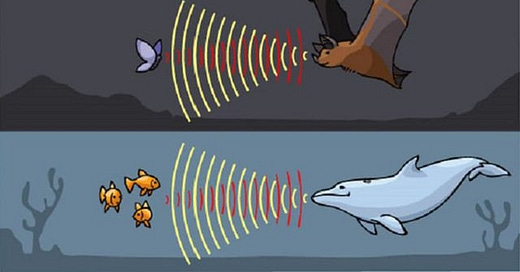Similar by Chance? Understanding Convergent Evolution
Convergent evolution and four classic examples thereof
Subscribe to Genomely for the latest discoveries and in-depth analyses in your inbox.
Thank you to our subscribers for your continued support and passion for science!
Convergent evolution is a fascinating and significant concept in the field of evolutionary biology, illustrating how different species can independently evolve similar traits in response to analogous environmental pressures or ecological niches. This phenomenon underscores the adaptability and diversity of life, offering insights into the mechanisms of evolution and the predictability of evolutionary outcomes. In this blog post, we delve into the intricacies of convergent evolution, exploring its principles, examples, and implications for our understanding of life on Earth.
Understanding Convergent Evolution
Convergent evolution occurs when organisms that are not closely related independently evolve similar features or functions as a result of having to adapt to similar environments or ecological roles. This convergence can be seen in various aspects, including physical structures, behaviors, and even molecular processes. It is a testament to the power of natural selection, shaping organisms in a way that best suits their survival and reproduction in their respective habitats.
Principles of Convergent Evolution
The driving force behind convergent evolution is natural selection, the process by which certain heritable traits become more common in a population because they are associated with increased survival and reproductive success. When different species face similar selective pressures—such as climate, predation, or food availability—they may independently develop analogous adaptations that help them thrive in similar ecological niches.
Convergent evolution is distinct from parallel evolution, where related species evolve similar traits, and divergent evolution, where closely related species evolve different traits. It highlights the creativity of evolution, producing similar solutions to life's challenges across disparate lineages.
Examples of Convergent Evolution
The natural world is replete with examples of convergent evolution, showcasing the adaptability of life across the globe. Some notable instances include:
Wings in Bats and Birds

Source: evolution.berkeley.edu Despite their distant common ancestry, both bats and birds have evolved wings that enable flight. This adaptation to a flying lifestyle involves significantly different structures (mammalian limbs vs. avian feathers) but serves the same functional purpose.
Eye Structure in Cephalopods and Vertebrates
The complex eyes of cephalopods (like squids and octopuses) and those of vertebrates (including humans) have evolved independently. Both eye types have lenses, retinas, and irises, yet their common ancestors had only simple light-sensitive spots.
Echolocation in Bats and Dolphins
Echolocation, the ability to navigate and find food using sound waves, has independently evolved in bats and dolphins. These animals emit sounds that bounce off objects, returning echoes that provide information about the surroundings.
Cactus Plants in the Americas and Euphorbias in Africa
Both cacti and euphorbias have developed thick, fleshy stems for water storage and spines for protection, adaptations to arid environments. Despite their similarities, they belong to very different plant families.
Implications for Evolutionary Biology
Convergent evolution challenges the notion of evolution as a purely random process, suggesting that there are predictable paths that evolution may take in response to similar environmental challenges. It also raises intriguing questions about the limits of adaptation and the potential for predicting evolutionary outcomes.
Furthermore, convergent evolution has practical implications for the study of biodiversity and conservation. Understanding how similar traits evolve in different species can inform conservation strategies, especially in the face of changing climates and habitats.
Conclusion
Convergent evolution is a testament to the adaptability and diversity of life on Earth. It highlights how similar environmental pressures can shape the evolution of unrelated species, leading to remarkable examples of similarity across the tree of life. By studying these convergent patterns, scientists can gain deeper insights into the principles of natural selection, the adaptability of organisms, and the predictability of evolutionary pathways. As we continue to explore the natural world, the concept of convergent evolution will undoubtedly play a crucial role in enhancing our understanding of the complexity and interconnectedness of life.







